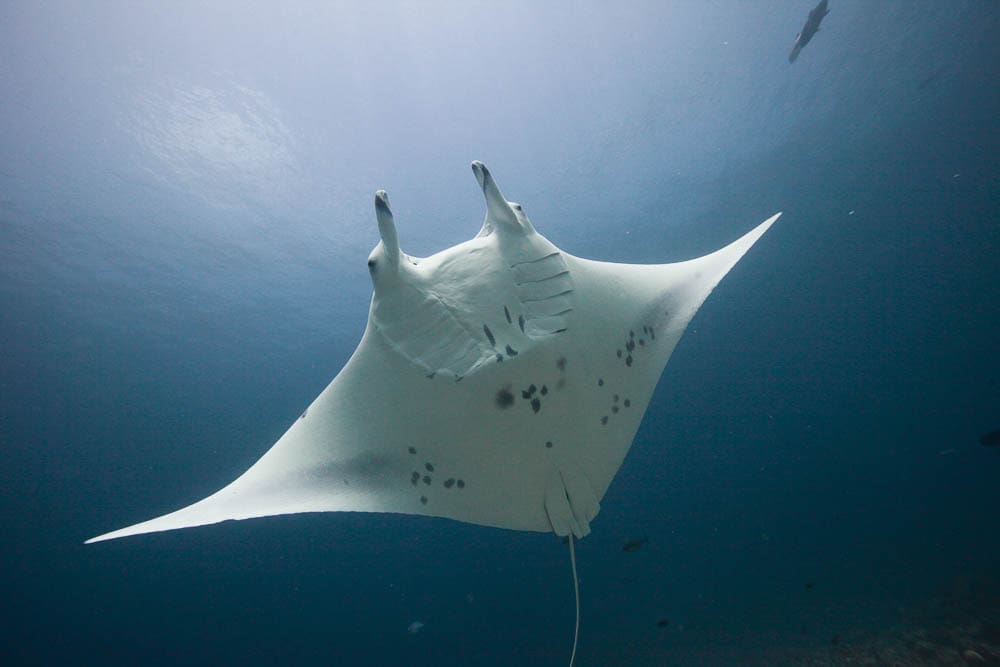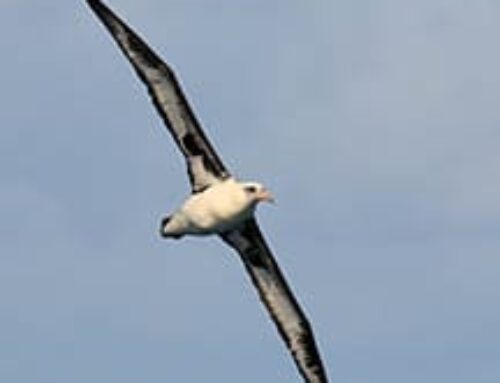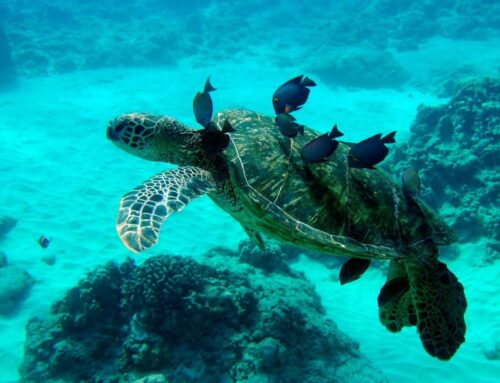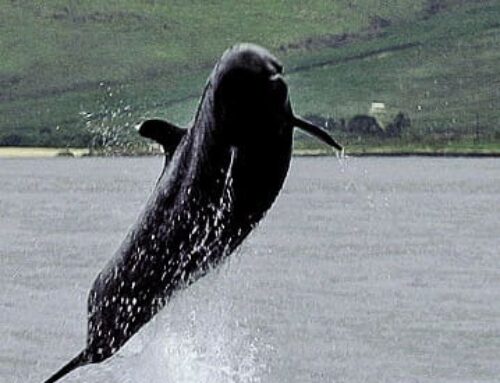Rays in Hawaiian Waters
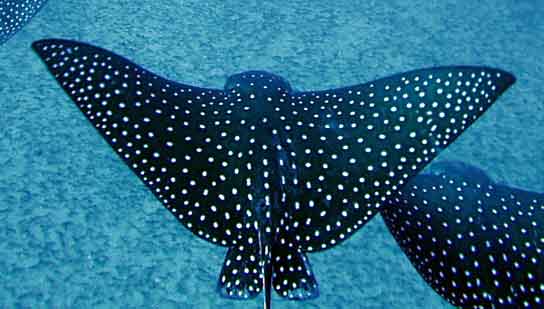
The beautiful spot patterns on eagle ray bodies are indicative of their birthplace.
Spotted Eagle Ray
Scientific Name: Aetobatus narinari
Hawaiian Name: “Hailepo”
With its eerie shape and flapping dorsal fins, the eagle ray is among the most elegant and mysterious-looking fish in the ocean. Its back is covered with a symmetrical dot pattern ranging in color from white and yellow to green. Its underbelly is white and its long tail, sometimes measuring twice as long as its body, is black. When an eagle ray is resting on the sandy ocean floor, its highly-patterned back acts as a camouflage, hiding it from both prey and attackers.
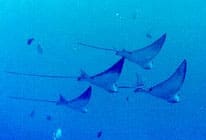
The spotted eagle ray (Aetobatus narinari), like all rays and sharks, has a skeleton of cartilage. Its large “wings”are tapered like a bird’s and can measure up to seven and a half feet across. The eagle ray’s shovel-shaped snout, and duck-billed mouth are extremely sensitive to smells and electrical currents in the water. This makes the eagle ray an effective hunter. Feeding on mollusks, crustaceans and small fish, this beautiful ray can reach weights of up to 500 pounds. The eagle ray lives mostly among rocky and muddy coral reefs and feeds along the sandy ocean bottom.
They usually grow to about 4-7 feet (excluding tail) and like to spend most of their time in water between 6-80 feet in depth.
The word “Manta” is Spanish for cloak or blanket. When swimming, the manta ray can resemble a spread-out cape.
Oceanic Manta Ray
Scientific Name: Manta birostris
Hawaiian Name: Hahalua
Manta rays are among the largest fish in the ocean. They can grow to have wingspans reaching up to 26 ft and weighing over 5,300 pounds. Despite their size, they are graceful creatures, soaring through the water like massive birds in flight.
Compared to the giant oceanic manta ray, the reef manta ray tends to be found in shallower, more coastal habitats, but local migrations are sometimes reported. Mobula birostris is similar in appearance to Mobula alfredi and the two rays are easily confused.

Once labeled “devil fish” by sailors believing the horn-like features on their head were a sign of evil, mantas are now known to be gentle filter feeders and harmless to man. Manta rays can be quite curious, especially when they are around divers. When threatened, they will curve one pectoral fin toward the back and the other toward the belly forming an s-shape cross section, while exposing their back towards the threat.
It appears that mantas do not breed until their wing-like pectoral fins reach a length of 13-15 feet.
Many male mantas follow a single female, mirroring her behavior in a bid to attract her as a mate. When she makes the final selection, she allows the male(s) to bite onto her long fin tip and slide beneath her for belly-to-belly copulation.
Females, which give birth to a single pup after a 12-month gestation, rarely give birth in consecutive years. That extremely slow reproduction could place the fish in danger from overfishing, both for subsistence and for export to be used in traditional Chinese medicines.
The rays sometimes swim across the ocean floor, skimming the reefs with their mouths. More commonly, they feed at the surface on small zooplankton and krill funneling them into their mouths with specialized head fins—cephalic fins—unfurled below into twin scoops.
Sometimes they gather in larger groups to feed on a concentration of krill. Over and over, they summersault in tight loops, their white bellies flashing. Some suggest that the looping is a vortex generator—the hydrodynamic equivalent of a sheep dog herding millions of krill into a concentrated ball to be rammed into the gaping manta mouths on their next pass. The blue whale, basking shark, and whale shark have feeding systems similar to the manta’s.
Manta ray populations, sadly, are decreasing rapidly in number. The number of mantas caught each year has quadrupled with an increase in Asian demand for dried manta brachial elements (“horns”) for traditional medicines, according to the Manta Pacific Research Foundation. The foundation has recently placed manta rays on a watch list of species that scientists consider vulnerable or threatened with extinction.
In June 2009, a bill to protect manta rays became law!
The BBC reveals the secret life of manta rays.
Wild Relatives – Sharks and rays are members of the vertebrate class Chondrichthyes, a group of fish thought to be one of the oldest in the ocean. Reef-going mantas have been newly named Manta alfredi, in tribute to Alfred Whitley who first scientifically described manta rays in the 1930s. These larger ocean-going mantas have retained a vestigial sting on their tails, dive deeply, and migrate.
The dark markings on the underside of manta rays are distinctive for each individual.
Wild Side’s wildlife tours focus on education and conservation so that an interactive relationship can be maintained in the best interest of both humans and dolphins. We strive to foster admiration and deep respect for these wonder-full marine mammals.

